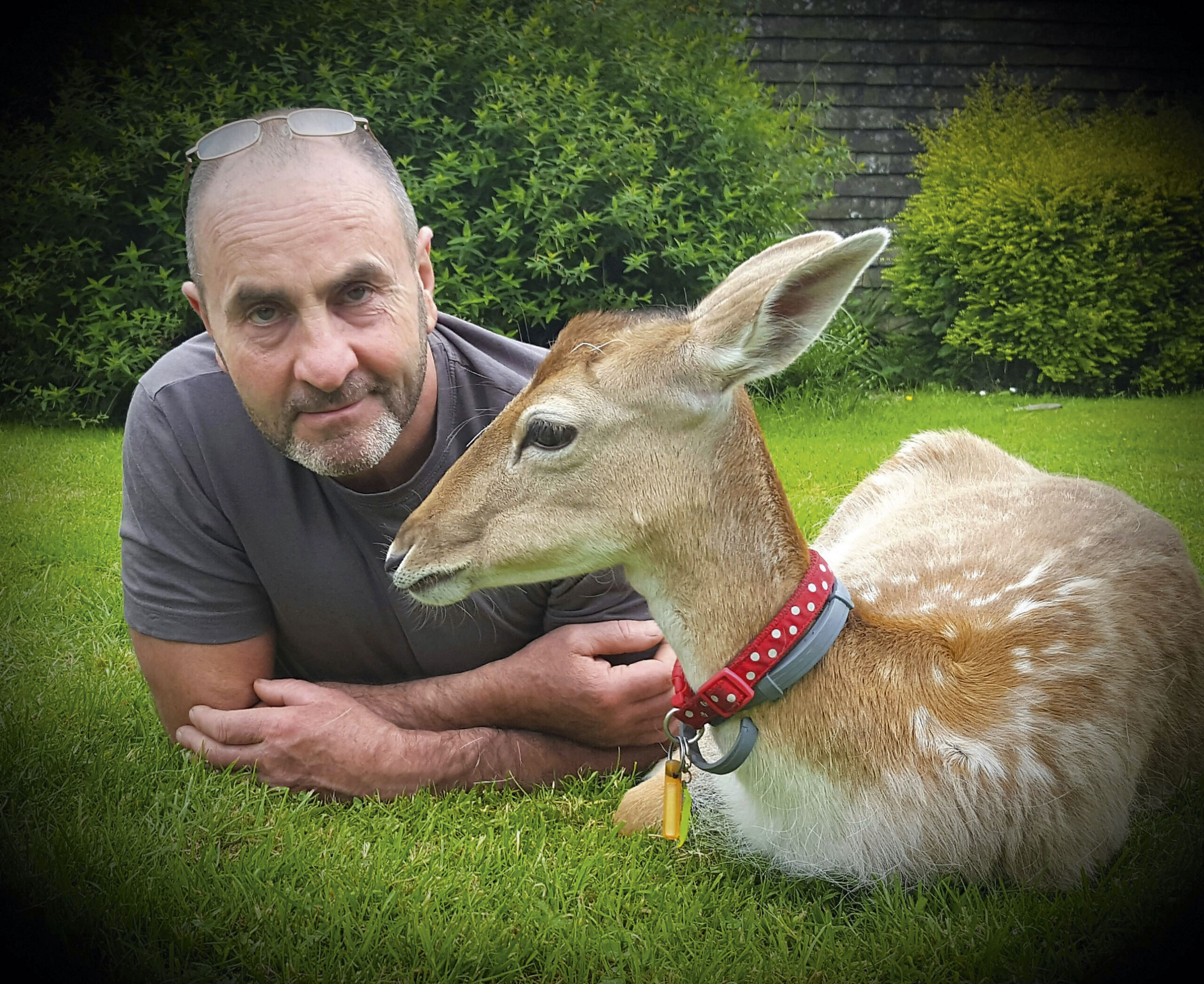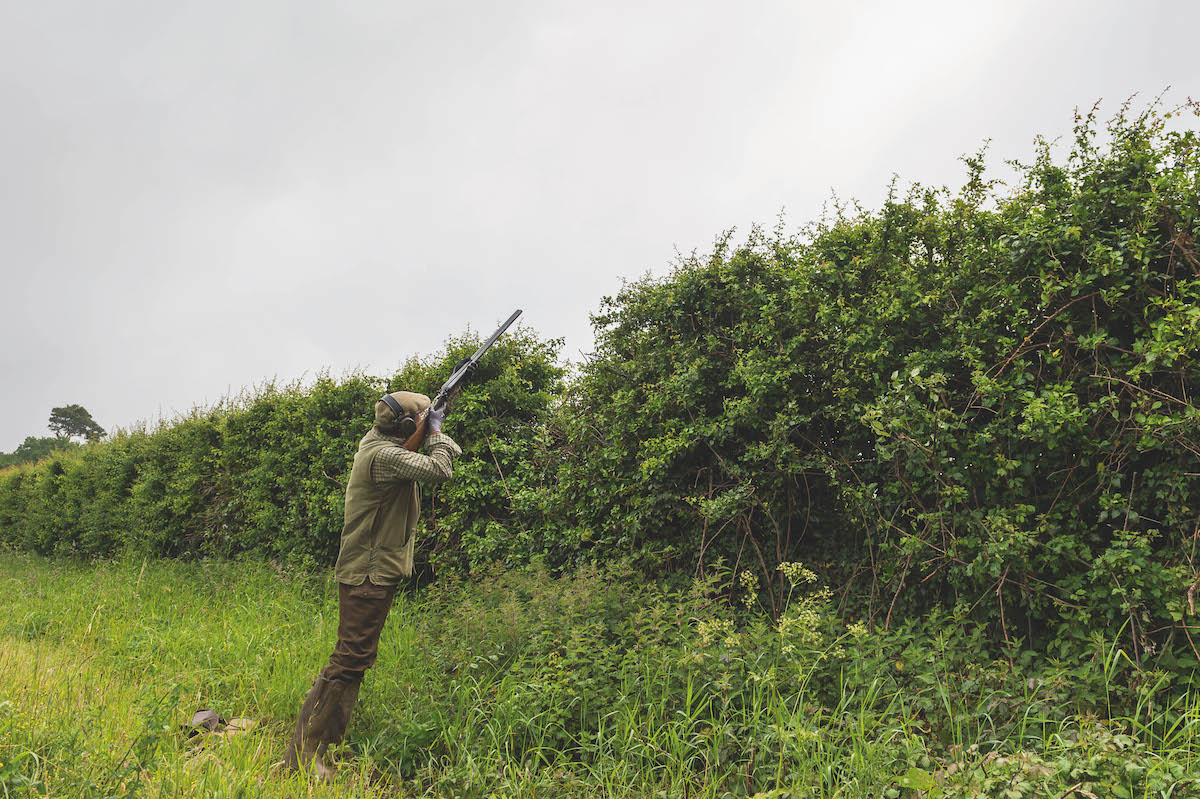How to hand rear injured or orphaned wildlife properly
Having to hand rear injured or orphaned wildlife is second nature to my family, but what are the rules when taking deer and foxes etc into your home?

What would you do if you saw an injured squirrel or orphaned deer in trouble on land near you? David Whitby examines the ethics behind hand rearing wildlife back to health and even keeping them as pets – have you ever had to hand rear corvids, foxes or deer in this way?
My fascination with all living creatures is in-built, and along with a somewhat contradictory passion to hunt, has always been a major part of my life. As a child I would hand rear anything that I or the keepers would find for me: crows, mice, rabbits – you name it, I would keep it as a ‘pet’. I remember my grandfather telling me I would never tame a woodpigeon and indeed he was correct, though many years later when my son Paul hand reared one and I told him the same he proved me completely wrong.
My children were encouraged to befriend wild creatures, just as I had done, and their childhoods were similarly enriched for so doing. They took pet squirrels to school under jumpers and kept the secret from teachers; one of the many deer we hand reared was also taken to school. This was much against the wishes of my son’s vegan, anti-fieldsports teacher, who tried his best not to vent hatred upon my three hunting, shooting and fishing children.
Over the years we have loved the company of everything from foxes, moorhens and squirrels to hooded crows, greylag geese and jays, along with hand reared game and wildfowl.
The one creature I have not mentioned but which was more intelligent, more fun, and definitely more fascinating than any other living animal I have known, was my raven. Or to be more accurate, ravens. That they are intelligent is well documented, that they speak with a voice that is an identical mimic of the origin is also well known, but the really scary thing about these birds is their sense of humour and devilment. They tease and torment everything, but especially dogs and humans, so if you want them to not do something then don’t make it obvious.
Keeping them is a battle of wills, an art in deception and a sheer joy. Since they enjoy full protection it is illegal to have a raven that is not licenced and hatched to a captive pair, and consequently they are far from cheap. I have had three in total, each one as wonderful as the next. Two succumbed to their total lack of canine fear while the third developed brain cancer and went blind. He was an amazing bird who had a real fetish for rubber, and it’s quite amazing how quickly he could remove windscreen wipers from a visitor’s car.
What kind of wildlife are you allowed to hand rear?
Starting out with a raven is akin to a non-swimmer jumping in at the deep end, so why not try a jackdaw, magpie or crow first? Before doing so, read up on the law. It is not straightforward and in certain circumstances with certain rescued species, DEFRA must be informed. With pest species, authorised people may kill or take them, or destroy or take their eggs.
Young corvids are easy, and will eat almost anything. As a boy I relied upon bread and milk, dog food (with added water) along with small mice and fish. Latterly as a gamekeeper, my ‘children’ had the benefit of pheasant eggs, unhatched or dead chicks, and a perfectly balanced diet of wet chick crumb.
You may need to force-feed initially, but they soon learn to gape and beg for food – it is truly amazing how much they eat. Keeping any creature is an education in their habits and ways. It is small wonder the corvids are so damaging to wildlife as their appetite is insatiable. A young crow will comfortably eat half a dozen pheasant chicks a day or indeed more – equate this to far smaller eggs and chicks and it is no surprise they are having such a devastating effect upon our songbirds.
Both crows and rooks are hardy, easy to hand rear and unforgiving of the odd missed meal, but not so magpies. Rearing a young magpie is easy, but they must not chill or go short of food for any length of time. The feeding of all fledglings is a constant process from dawn to dusk and unless well feathered, they will require artificial heat. An infra-red lamp or one of the small brooders is fine and in an emergency we have simply used a single light bulb placed close to the chick – let your hand determine the temperature, obviously they must be warm enough, but don’t cook them!
This rearing pattern is similar for most chicks and fledglings: warmth and regular feeding are essential. I prefer to make the food sloppy rather than giving water. Have a call for every meal time and once they have the freedom of the garden you will always bring them back for food. I have found the corvids rarely stray far, but they may try to follow your vehicle. A light wing clip may be necessary to keep them at home.
A pet crow I had as a boy for some 10 years made the perfect decoy, and I would throw down a rabbit or similar food and leave him there untethered (a legal requirement). From a hide I shot many visiting crows drawn to his quite natural behaviour.
Other than corvids I think young moorhens are amongst the most endearing. I have reared two that have been handed in over the years, both not more than a day old. They instantly become tame and again take readily to chick crumb or bread and milk, but also love wire worms (soaked if not fed live), garden worms or just about any insect.
Is it easy to hand rear foxes, deer and squirrels?
We have reared two foxes and they are a sheer if smelly delight. I would advise against a dog cub; even with the scent gland removed they have the well-known fox odour and it is overpowering. They need to be small, black and preferably still with eyes closed for best results. They take puppy replacement milk, are really easy to hand rear and as tame as dogs, and again they make marvellous decoys for corvids.
It always amazes me pet shops sell so many hamsters, gerbils and rabbits when one of the best pets for a child is a young grey squirrel. Yes, they are capable of a serious bite, but so are rats and if you hand rear a female and get it young they are completely tame and playful, though somewhat destructive in the house. My children all had them and they were great fun and intelligent.
Last but far from least are the many deer we have reared over the years, including Isla, the wonderful fallow doe, who still graces us with her presence. Having worked with deer for nearly 40 years I have come across both orphans and young that members of the public have picked up.
The one golden rule is not to hand rear a male of any species. A tame buck or stag with no fear of humans is a dangerous animal, including or indeed especially roe. They turn from a loving pet to dangerous animal overnight and will viciously attack anyone within their territory.
Females on the other hand are a delight. Isla believes she is one of the dogs, but they are not always easy to hand rear and I have lost several to scouring.
Goat’s milk appears to be the best, and feeding little and often is the route to success. They need to suckle every two to three hours during the day and three to four at night. Scouring is frequently a problem and be prepared to visit your vet sooner rather than later if it persists, as they rapidly deteriorate if left.
Hand rearing wildlife is an education in itself
My family has gained so much from rearing members of our wildlife. Nothing can be more endearing than a starving young wagtail picked up in the middle of a main road, or more amusing than a young jackdaw that has fallen down a chimney. The creatures we have known have taught me a great deal about their habits, strengths and weaknesses. I realise now how awful my behaviour was as a youngster when any wounded corvid was kept to be tethered as a decoy and caged when finished with.
Keeping pests and predators in captivity, or more accurately free to roam the garden, has made me behave in a different way towards them. Of course they have to be controlled, but not without any spark of humanity.








